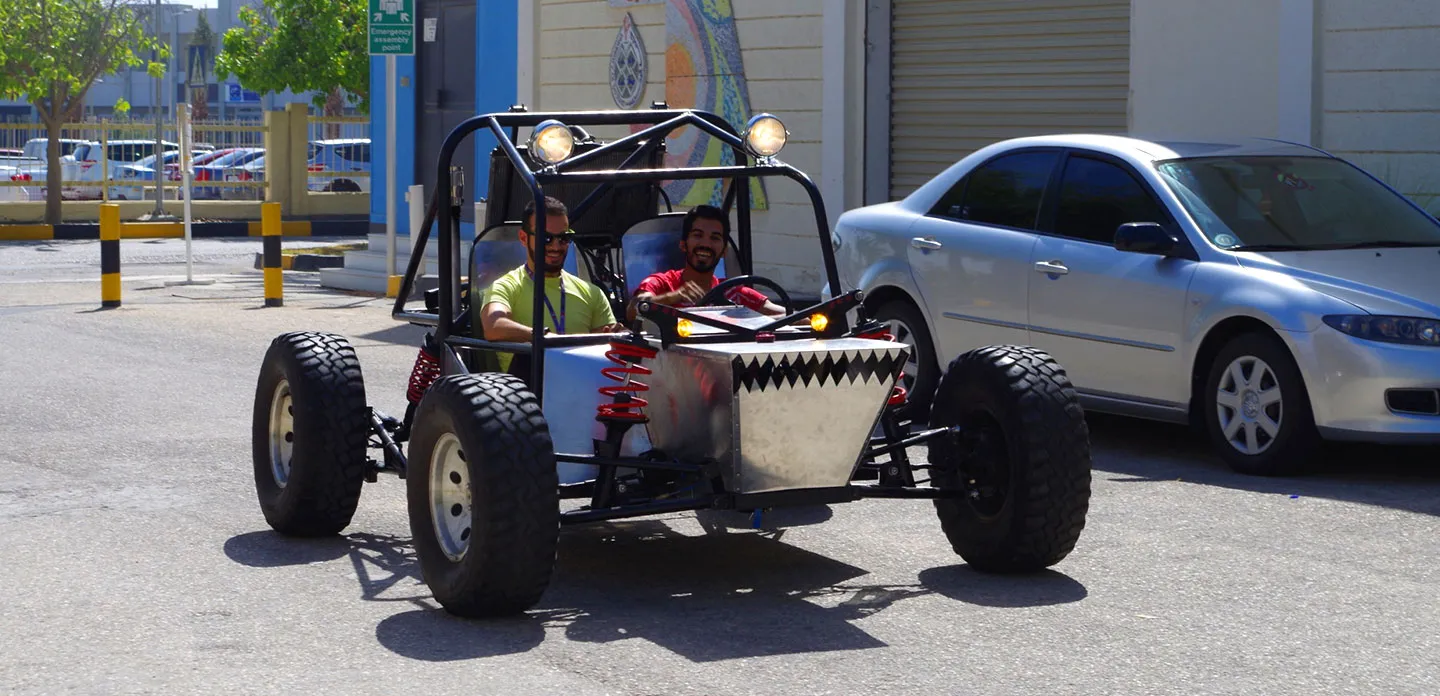Getting Started with Initial Design
Simulating a real-world industry experience, polytechnic tutors acting in the role of “clients” and facilitators first gave students the design brief. After discussing a broad outline of the design requirements and parameters with their tutors, students then researched how each problem is to be resolved in a basic sense before they started a more detailed analysis. Students identified any conflicting or non-aligning requirements and began to see how the design and manufacture of one component can impact the placement, design, and manufacture of many others. The design process was not constrained and students were encouraged to research alternatives and use any material or manufacturing process they chose. In addition to the books in the library and the Moodle web resources provided, the workshop also had Westfield kit cars and a Jaguar® E-Type that students used as study tools.
Assessing Design Options
As the students progressed, they asked questions about the methods used and design options chosen by a manufacturer. Once their design became more refined, students considered constraints such as cost, availability of materials, and manufacturability (Can you make it?), time-frame, and available machinery. For example, the front suspension topic used the following learning outcomes that were integrated into a single, multidisciplinary assignment:
- Explain why components and materials fail and how stresses can be safely applied
- Use appropriate methods of joining materials in an assembly
- Analyze the effect of a load on a member
- Analyze complex stress and strains and location of principle stress planes and stress concentrations in a material
- Evaluate an engineering design
Students examined alternative requirements from a design, geometry, material, and manufacturing perspective. They selected a suitable type based on these desired properties: camber gain, castor, Ackermann angle, roll center, steering axis inclination, and steering geometry.
The students then designed each element, citing calculations that proved that the correct materials were specified for components, brackets, and fixings by defining the loads imposed upon each component that also incorporated a suitable factor of safety (FoS). Students calculated these loads using the estimated mass, center of gravity, and expected forces generated under acceleration, braking, cornering, and hitting a bump.
Students calculated the forces and expected stresses within the material, and then checked them manually. Values obtained from the simulations (for example, Von Mises stress, deflection) were compared with manually calculated values to confirm (or refute) appropriate material or design selections. This enabled students to identify whether the stress concentrations highlighted by SOLIDWORKS were reasonable or feasible, and provided a good method of verifying the initial findings, as well as the full and combined effects they expected to occur within their system.
Moving Forward from Design to Manufacturing
As the design became more complete, the vehicle began to materialize, evolving from a series of individual components to the finished article. Once the suspension components passed the stress tests successfully, they were fitted in place onto the chassis. This exercise continued until the entire vehicle was assembled with all of the major components tested and fit-forpurpose approved by both the students and the clients.
After each component completed the design cycle—investigation, synthesis, analysis, optimization, and justification—students began manufacturing their suspension, chassis, and steering designs. They managed and ran this project themselves, again with guidance and input from the tutorial staff. This was an interesting experience for them, as they discovered that not every aspect of a SOLIDWORKS
design can be directly translated into a real-world solution. Students had to redesign components or structures to accommodate tooling, fixturing, or manufacturing constraints. Problem-solving, teamwork, and initiative reflected real-world experiences that students will need to be successful within the industry.
